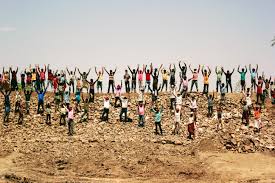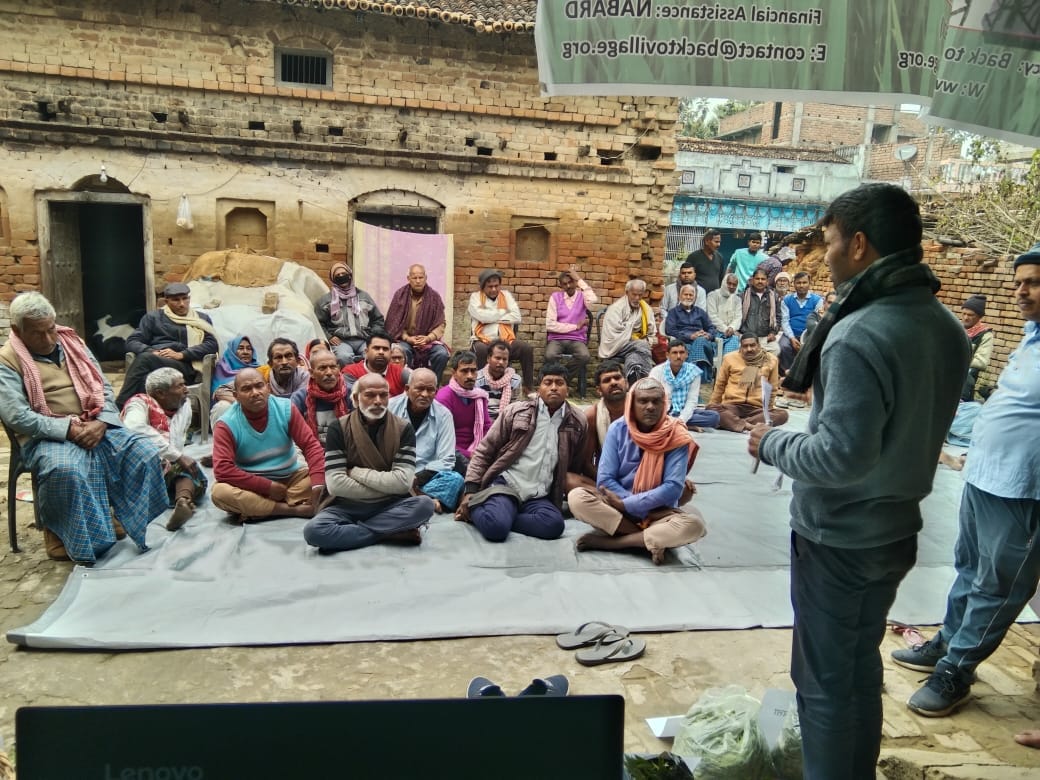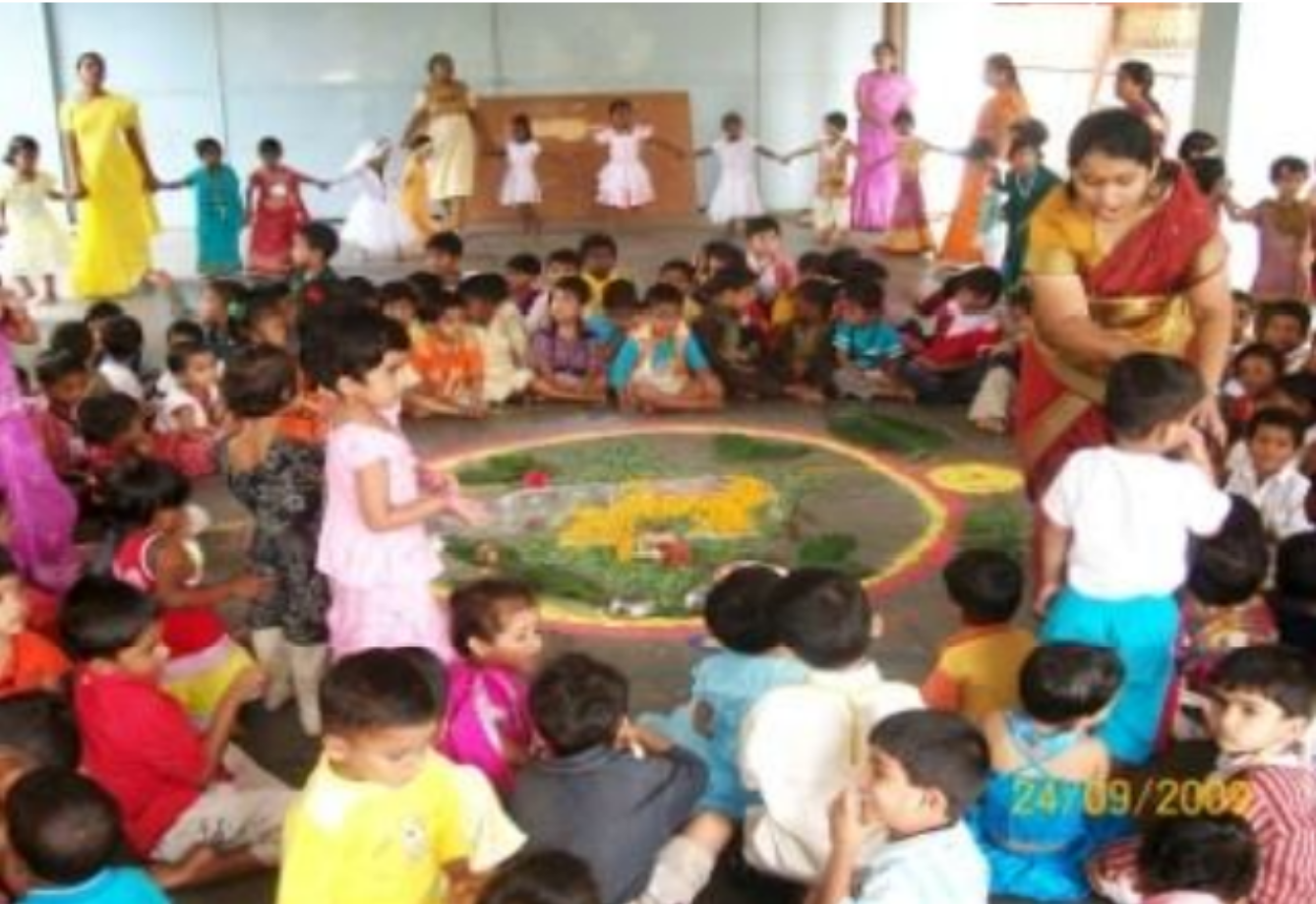The Chinmaya Organization for Rural Development (CORD) has its roots in the Chinmaya Rural Primary Health Care and Training Center in 1985, founded by Pujya Swami Chinmayananda ji. While providing health services in remote villages of Southern India, volunteers realized that these villages had many problems outside of healthcare, such as poverty, illiteracy, poor basic facilities and various social problems. In order to address these challenges, the Chinmayananda Rural Primary Health Care Center was expanded to the Chinmaya Organization of Rural Development. Since then the organization has grown many folds and has been providing yeoman service in empowering rural India. We talked to CORD’s director, Dr. Kshama Metre, who is more commonly referred to as Dr. Didi, to understand the work of CORD.
She told us that initially, the CORD team consisted of village women who were only educated to a fifth to eighth grade level. One may consider that as a disadvantage to the initiative. However, she told us that it proved to be a significant advantage, as these women could use their experiences to advise CORD on how to best communicate to the villagers who too were not educated. Their suggestions on how to tweak and implement programs within the villages was very useful. These women also were fast learners, they learned everything they needed to know as time went on, with their experience proving more valuable than their formal schooling.
One of the most pressing problems CORD had to deal with was the plight of women in many villages. Oftentimes, husbands would siphon all the money from the household to fuel their
alcoholism or use it for their own purposes; essentially, there were no assets or cash that women could claim as their own to use how they wished. These women also had no place to talk; the only place where they would be able to talk about their issues was when they went to their local water source to fetch water or when they went into the forest to relieve themselves. In order to empower the women of India, CORD developed the concept of ‘mahila mandals’.
Mahila Mandals
The mahila mandals are a revolutionary concept that has been successfully implemented in hundreds of villages that give women a voice and advance communities. Generally, mahila mandals consist of a group of women that gather in a space to simply have a discussion about anything they have on their mind. Topics include but are not limited to: economic problems, individual issues, village news, and agriculture. These mahila mandals allow women to have a chance to share anything that is bothering them or ask for help should they need it. Because these women already share the burden of the majority of problems in the village, these mahila mandals are a tool for solving problems of the village. These groups are all completely self-sufficient, with secretaries and presidents elected by the rest of the members. They are taught how to record the meeting minutes and extract the most productivity from their discussion; all CORD does is introduce the idea of having a space to communicate to bring benefit, implement this space within their village and schedules, provide tools and education, and let the women of the village do the rest. In this way, women of the village share their burden and can solve their own problems as well as problems facing the entire village in a more efficient and healthy manner, promoting gender equality and easing their responsibilities.
Microcredit Program
Dr. Didi told us that to aid the economic problems of the mahila mandals and villages in general, the microcredit program was developed to promote unity within the community and get over obstacles as a team.
The microcredit program is innovative in the sense that it is a humble solution for a large
problem. As Dr. Didi noted, “I am not a banker. It’s best for the bankers to lend to the people”. In essence, the microcredit program is not a lending program, but a way for the people to pay for their own goods and inspire independence by giving them the freedom to keep their own accounting systems. Essentially, it was a program to educate the villagers on financial literacy and establish a system of self-accountability by teaching the basics of finance (i.e saving, credit, etc) and setting up links with the National Bank for Agriculture and Rural Development (NABARD).
This system was first implemented in South India and later CORD North India took the lead. This system was wildly successful because of its simple solution to a collective problem across the rural areas of India. Seeing how successful this program was, the Department of Agriculture in the Government of India and a few other NGOs met through NABARD to receive training on how to implement the program. The elegance of the microcredit program was that it was led directly from the grassroots level, and everyone who was trained by CORD was trained by women directly from villages. The microcredit program was so powerful that bank
chairpersons arrived in Sidhbari to receive training on this new program. When they arrived, they had to live simply by themselves, as CORD’s facilities were not so advanced back then. Eventually, these bankers warmed up to the village women and were conversing with the women as if they were their own sisters. By the end of the program, the bankers recognized
and respected the knowledge they had been given, and gave some of their own money to the mahila mandals as gurudakshina. Soon, CORD was training over 40,000 bankers, officials, and administrators in the microcredit program and was adopted beyond North India to Tamil Nadu and other regions across India.
Integrating Into Villages
In order to implement village improvement programs, Dr. Didi told us, CORD has a system to integrate its programs into a village to inspire change. CORD’s vision is ultimately to empower the poor to change their own lives through self-improvement programs driven by themselves. The DNA of this vision is through the Integrated Participatory Programs, which combine self-participatory programs with services that CORD provides to educate and equip the villagers with everything they need to create a self-sustaining, prosperous society. This includes, but is not limited to providing the structure for the mahila mandals, microcredit, and educating them on health practices. Dr. Didi told us that like everything CORD does, the people are at the center of everything they do; their principles are participation, integration, sustainability, and networking (PISN) through CBOs (community based organizations). These principles are what allow CORD to integrate into each unique village and enable the villagers to live a self-sustained life.
In essence, what we understood about CORD was that it was like a trunk of a tree where each branch is an initiative to solve a particular program. Whenever a problem was identified a new branch arose from the trunk to address it. The central principles and the urge to serve and empower remained the same. CORD hopes that some day the community itself will become this trunk and lead these programs to address with problems in the village. Dr. Did told us that through these programs, CORD drives change right at the grassroots level that feeds all the way up to the district level. Though this is just a model, it has been highly effective: they operate with this exact philosophy in 6 states reaching over 970 villages and 50,000 people directly. This means that they are not interacting with them through an institution or outsourcing change by throwing money at the problem; they are directly implementing solutions with the village people, giving them the tools to solve these problems on their own.

Dhruva Rayasam
Dhruva Rayasam is a senior from Hillsborough, New Jersey. He likes his dog, playing basketball, and Taco Bell.





